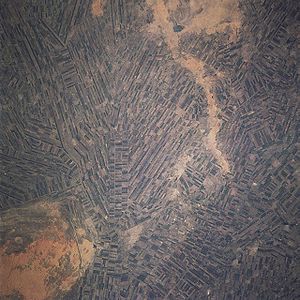Gezira Scheme

The Gezira Scheme (
The Gezira (which means "island") is particularly suited to irrigation because the soil slopes away from the Blue Nile and water therefore naturally runs through the irrigation canals by gravity.
After the lowest Nile flood for 200 years, the Sennar Dam was constructed on the Blue Nile to provide a reservoir of water. This dam was completed in 1925 and is about 3 kilometres (1.9 mi) long. The Gezira Scheme was initially financed by the Sudan Plantations Syndicate in London and later the British government guaranteed capital to develop it. The Sudan Gezira Board took over from private enterprise in 1950[1] and was chaired by Arthur Gaitskell.[3]
Farmers cooperated with the Sudanese government and the Gezira Board. This network of canals and ditches was 4,300 kilometres (2,700 mi) long, and with the completion in the early 1960s of the Manaqil Extension on the western side of the Gezira Scheme, by 2008 the irrigated area covered 8,800 square kilometres (3,400 sq mi), about half the country's total land under irrigation.[4] The main crop grown in this region was still cotton.
See also
- They Planted a Stone, a 1953 documentary film about the creation of the Gezira Scheme
References
- ^ a b c Hyslop, J. (1952) : "The Sudan Story", Chapter "The Bounteous River", The Naldrett Press, London, UK
- . Retrieved 8 November 2015.
- ISBN 9780521326391.
- ^ "Agriculture Sectors (in Sudan)". Embassy of the Republic of Sudan, Kuala Lumpur, Malaysia. 2008. Archived from the original on July 22, 2011. Retrieved December 5, 2009.
External links
- Sudan: Options for the Sustainable Development of the Gezira Scheme (PDF), Government of Sudan and the World Bank, 17 October 2000 Archived 28 November 2006 at the Wayback Machine
- FAO report on Sudan economy[permanent dead link]
- UN book "Lessons learnt"
